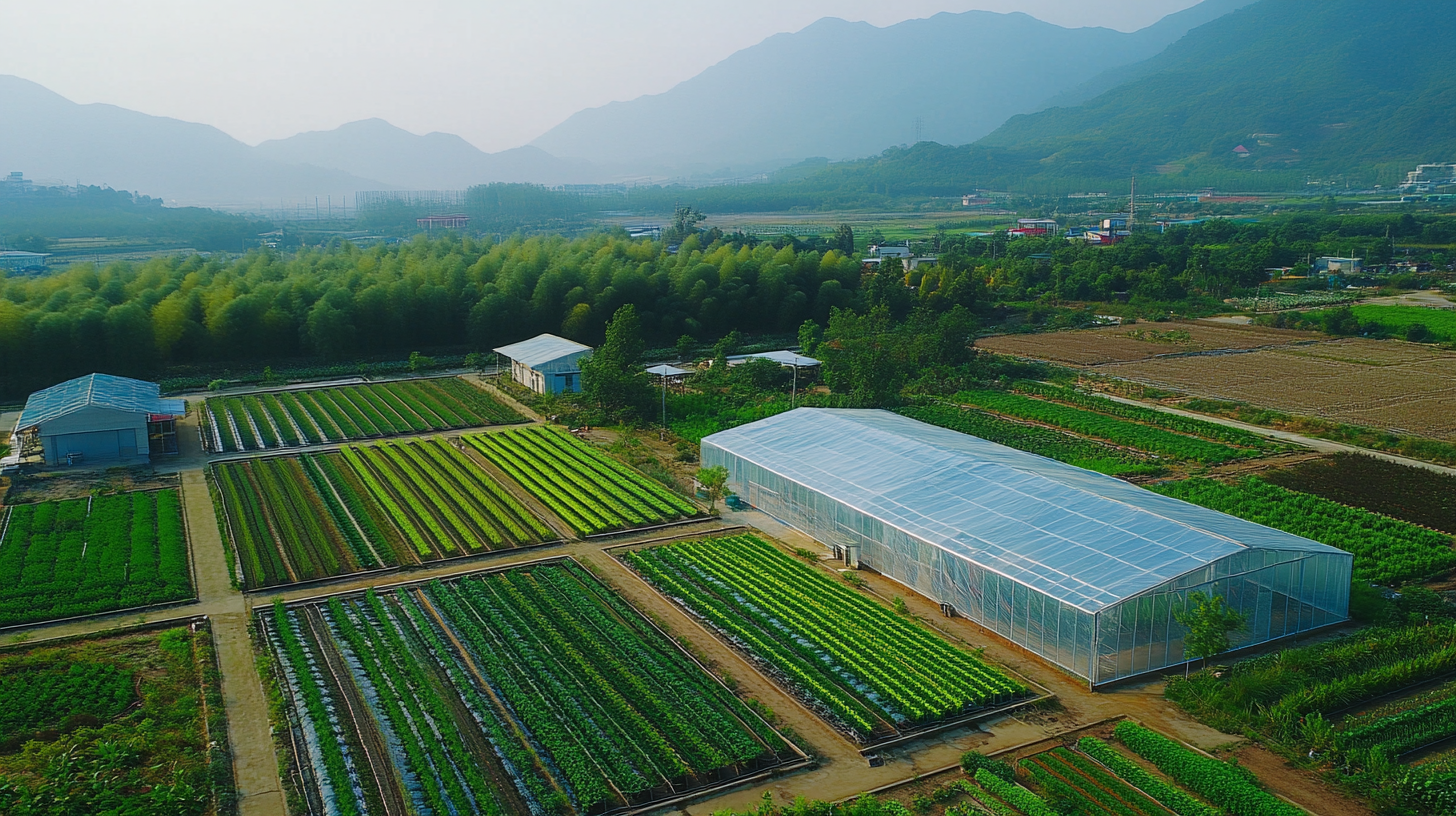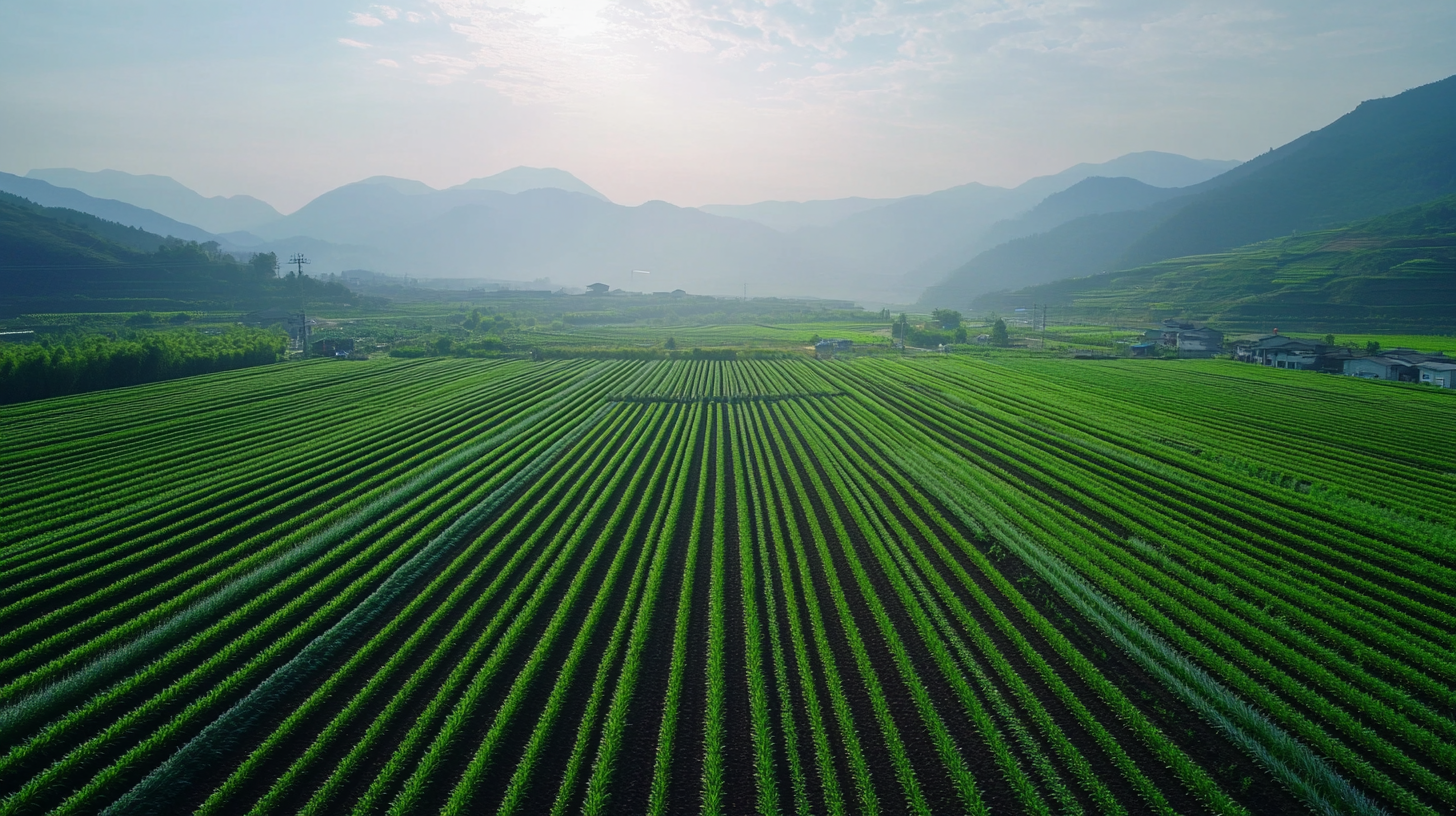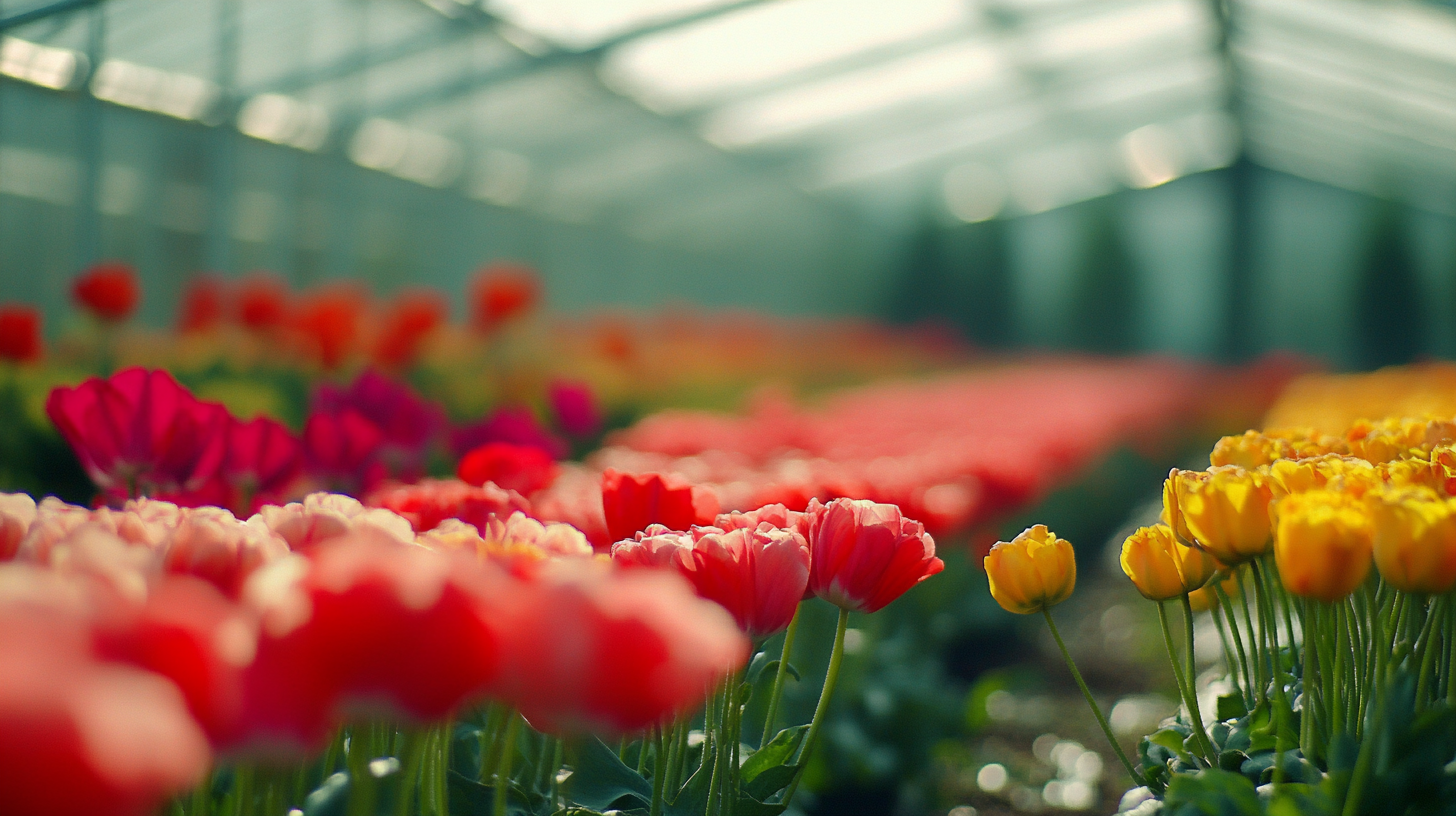
Empowering Global Agriculture with Superior Nursery Greenhouses from China
In the pursuit of enhancing agricultural productivity and sustainability on a global scale, the role of innovative technology cannot be overstated. Among these advancements, the Nursery Greenhouse stands out as a pivotal solution for growers seeking to optimize their production practices. Originating from China, where cutting-edge design meets functional efficiency, these greenhouses are engineered to create the ideal growing environment for various crops, thus empowering global agriculture. By harnessing state-of-the-art materials and techniques, Chinese nursery greenhouses enable farmers to extend their growing seasons, improve plant health, and maximize yield. This blog will explore the transformative impact of these superior greenhouses on farming practices worldwide, highlighting their significance in addressing food security and promoting sustainable agricultural development. Join us as we delve into the features, benefits, and global implications of nursery greenhouses, and discover how they are reshaping the future of agriculture.

Innovative Features of Chinese Nursery Greenhouses Transforming Global Agriculture
The advancements in nursery greenhouse technology from China are revolutionizing global agriculture, offering innovative features that enhance plant growth and sustainability. According to a report by MarketsandMarkets, the global greenhouse market is projected to grow from USD 31.6 billion in 2021 to USD 42.5 billion by 2026, reflecting a CAGR of 6.0%. This growth is largely driven by the adoption of advanced greenhouse designs that optimize light, temperature, and humidity—essential factors for maximizing crop yields.
Chinese nursery greenhouses are at the forefront of this innovation, incorporating state-of-the-art technologies such as automated climate control systems and energy-efficient materials. A recent study published in the Journal of Agricultural Science found that greenhouses equipped with intelligent monitoring systems can increase vegetable production by up to 30%, thereby addressing food security challenges in many regions. Furthermore, these greenhouses are designed to utilize renewable energy sources, reducing their carbon footprint—a crucial aspect as the agricultural sector aims to contribute to global sustainability goals.
Emphasizing these cutting-edge features, the nursery greenhouses from China are not just structures; they symbolize a commitment to improving agricultural practices worldwide, helping farmers adapt to changing climates and market demands while ensuring optimal resource management.

Sustainable Practices: How Chinese Greenhouses Enhance Crop Production Efficiency
Recent advancements in greenhouse technology from China are revolutionizing sustainable agricultural practices worldwide. According to a report by the Food and Agriculture Organization (FAO), greenhouse production methods can increase crop yields by up to 50% compared to traditional farming. This is primarily due to the controlled environment that greenhouses provide, optimizing light, temperature, and humidity levels to boost plant growth. Chinese manufacturers are leading this innovation by producing high-quality, energy-efficient greenhouses equipped with the latest technological advancements.
Moreover, sustainable practices in these greenhouses significantly reduce resource consumption. Research published in the Journal of Cleaner Production indicates that modern greenhouse systems can decrease water usage by approximately 30% through advanced irrigation techniques and water recycling systems. By utilizing such sustainable practices, Chinese greenhouses not only enhance crop production efficiency but also contribute to environmental conservation, positioning themselves as crucial players in the global agricultural landscape. As countries strive to meet rising food demands, integrating Chinese greenhouse technologies could prove to be a pivotal strategy in building a more sustainable agricultural future.
Crop Production Efficiency in Chinese Greenhouses
This pie chart illustrates the efficiency of crop production within Chinese greenhouses, highlighting the proportion of different types of crops grown. The data showcases the focus on vegetables, fruits, flowers, and herbs, reflecting the diverse agricultural capabilities enhanced by innovative greenhouse technologies.
The Role of Advanced Technology in Modern Chinese Greenhouses
The modern agricultural landscape is increasingly shaped by the adoption of advanced technologies, particularly in the realm of greenhouse production. China's nursery greenhouses exemplify this transformation, incorporating innovations such as climate control systems, automated irrigation, and smart sensors. According to a report by MarketsandMarkets, the global greenhouse market is projected to reach $43.4 billion by 2023, with the Asia-Pacific region leading this growth, primarily driven by China's significant advancements in greenhouse technology.
In recent years, the integration of artificial intelligence and IoT (Internet of Things) devices in greenhouses has drastically improved operational efficiency. These technologies enable real-time monitoring of plant health and environmental conditions, allowing for precision agriculture practices that can increase yield by up to 20% per growing cycle, as noted in a study by the International Society for Horticultural Science. Chinese manufacturers are at the forefront of this trend, continuously developing high-tech greenhouse solutions that empower farmers worldwide to optimize production and sustainability. The embrace of such technology not only boosts agricultural productivity but also addresses critical issues like water scarcity and climate change resilience, positioning China as a leader in global agricultural innovation.
Global Impact: Supporting Farmers Worldwide through Superior Greenhouse Solutions
The agricultural landscape is rapidly evolving, driven by innovations in greenhouse technology. Superior nursery greenhouses from China are making a significant global impact by supporting farmers with effective solutions tailored to their unique challenges. According to the United Nations, global food production must increase by 70% by 2050 to feed the growing population, emphasizing the urgency for sustainable agricultural practices. Greenhouses offer an effective method to enhance crop yield, with studies showing that utilizing controlled environments can increase production by up to 50% compared to traditional farming methods.
Farmers can enhance their productivity and sustainability through strategic greenhouse use. Tip: Consider incorporating precision agriculture techniques within your greenhouse operations. These techniques, which utilize data analytics and IoT sensors, can help monitor plant health and optimize resource use. Additionally, using energy-efficient designs in greenhouses can significantly reduce operational costs, making farming more profitable.
Moreover, the versatility of greenhouse systems means they can be adapted for various climates and crops, enabling farmers from diverse regions to benefit. Tip: Invest in modular greenhouse systems that allow for expansion as needs grow. This flexibility not only fosters innovation but also encourages sustainable farming practices, contributing positively to the global agricultural ecosystem.
Global Impact of Superior Nursery Greenhouses from China
This chart illustrates the potential global impact of superior nursery greenhouses from China on various agricultural outcomes, highlighting the benefits for farmers worldwide.
Case Studies: Success Stories from Farms Utilizing Chinese Nursery Greenhouses
The implementation of Chinese nursery greenhouses has revolutionized farming practices globally, showcasing remarkable success stories across various regions. For instance, a case study conducted by the International Society for Horticultural Science revealed that farms equipped with advanced greenhouse technologies saw an average yield increase of 30%. This impressive statistic highlights how superior design and materials used in these greenhouses enable year-round cultivation, optimizing both crop quality and quantity.
In one notable case, a family-run farm in southern Africa utilized a Chinese-made nursery greenhouse, leading to a doubling in their tomato production. By leveraging efficient climate control and irrigation systems, the farm not only improved their harvest volume but also reduced water usage by 40%, in line with the findings from the Food and Agriculture Organization, which stresses the importance of sustainable practices in agriculture.
Tip: When selecting a nursery greenhouse, consider features that enhance energy efficiency and optimize plant growth, such as thermal screens and automated ventilation systems. These elements can significantly contribute to healthier plants and better yields. Additionally, collaborating with local experts who understand regional climate conditions can further enhance the greenhouse's effectiveness, ensuring your farm thrives.

